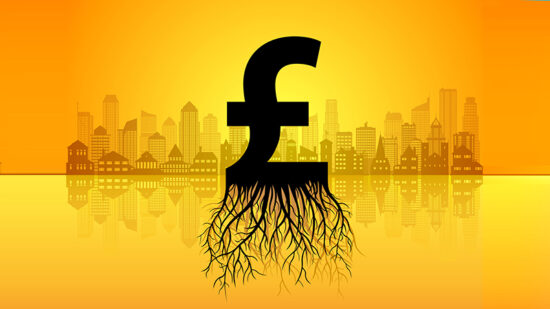In a move reminiscent of the West Wing episode Take out the Trash Day, the government took the opportunity on Tuesday to confirm that the earnings element of the pensions triple lock will be removed for 2022/23.
Shortly after Boris Johnson took to the despatch box to confirm that his government plans to increase National Insurance contributions by 1.25%, the secretary of state for work and pensions, Therese Coffey, told the House of Commons that she was hitting the pause button on the pensions triple lock.
“Just as happened last year, I anticipate an unusual change in earnings due to the effects of the covid pandemic,” she said. It has been widely reported that earnings growth is expected to exceed 8%, which could add £4bn ($5.5bn, €4.7bn) per year to the government’s pension bill.
The state pension saw a 2.5% uplift last year despite earnings falling by 0.1 percentage point, she said. “In response, we legislated to set aside the earnings link.”
Something which she plans to do again for 2022/23. Coffey will introduce a bill to parliament on Wednesday to ensure the state pension increases by 2.5% or in line with inflation, which she said “is expected to be the higher figure this year”.
She emphasised that it is for one year only.
Sensible move
Former pensions minister Steve Webb, described the move as ‘striking the right balance’.
The LCP partner added: “With the earnings figures showing a spike because of the pandemic it is understandable that the government has taken the decision to suspend the triple lock for one year only.
“But it is very welcome that they have recommitted themselves to the policy for future years. The UK state pension remains relatively low by international standards and many women in particular depend on the state pension for a large part of their income in retirement.
“To relax the rules on a one-off basis because of the distortions caused by the pandemic but to reinstate the policy for future years strikes the right balance.”
Unpopular
Helen Morrissey, senior pension and retirement analyst at Hargreaves Lansdown, adopted a similar tone.
“Such a move will no doubt disappoint pensioners who could have been in line for an inflation busting increase to their state pension of more than 8% under the triple lock.
“However, given many of the working population saw their income fall during the pandemic such a large increase would be unlikely to be popular -any solution needs to be fair to pensioners and taxpayers alike.
“This along with the announcement that working pensioners will contribute to the Health and Social Care levy shows the burden does not solely fall on younger workers.
“The triple lock has played a role in boosting the incomes of pensioners over the past decade, but the current situation has exposed its flaws.”
She added: “While the suspension is only for a year, the time has come to look at whether the triple lock is fit for purpose and remains the best way to preserve the long-term value of the state pension.”
Sleight of hand
For anyone unfamiliar with the West Wing or the particular episode mentioned above; firstly, have a word with yourselves, it is a fantastic series.
It sees press secretary CJ Cregg release a flurry a information and stories to the White House press corp in the knowledge that a lot of the ‘bad news’ pieces will be overlooked or under-reported.
Somehow, it sprang to mind when the eyes of the International Adviser team were focused on reporting the confirmation that National Insurance contributions are set to rise and the pensions triple lock update was very nearly missed.
In fact, it took considerable effort to confirm reports on Twitter that it had been suspended.
So, call me suspicious, but one could argue that the pensions triple lock announcement would more anger the Conservative Party’s core voter block than a National Insurance increase that will be shouldered by working age people.
Levy / tax?
Speaking of paying higher National Insurance contibutions, as Johnson confirmed today, the move will come into effect from April 2022 but still requires parliamentary assent – which the government announced would take place during a snap vote on Wednesday.
It was twinned with an identical rise on share dividends, in a presumed attempt to mollify those accusing the government of robbing the poor to give to the rich.
In a bit of window dressing, the 1.25% NI increase is expected to be described as a ‘levy’ and appear as a separate line on payslips.
The money will be ringfenced and Johnson expects to raise almost £36bn ($50bn, €42bn) over the next three years for frontline services.
He assured the House of Commons that it would not be used to pay bonuses to middle management.
In a neat bit of politicking, the prime minister confirmed that the NI increase would only apply to England, but the proceeds would be spread across the other three nations where health and social care are devolved powers.
From October 2023, a lifetime cap of £86,000 will be placed on care costs.
Anyone with assets worth less than £20,000 will pay no care costs.
A tax hike in all but name
And it’s not just individuals that are being stung with the rate rise, small and medium-sized businesses and entrepreneurs will be unhappy with the change.
Not just because they are on the hook for higher NI contributions; but as AJ Bell’s head of personal finance Laura Suter points out: “It will be felt the most by company directors, including the self-employed and contractors, who pay themselves via company dividends in addition to salary.
“The move means that anyone taking home more than £2,000 a year in dividends will now face a slightly higher bill. At £10,000 of dividends this equates to £100 a year more, regardless of your tax bracket, while at £20,000 a year it means an extra cost of £225.”
Suter added: “The dividend tax hike looks very much like a last-minute policy addition positioned as spreading the pain of tax increases across society. Investors and the self-employed will collectively pay £600m more in tax as a result of the move.”
When it comes to retail investors, she says they “will only be impacted if they have significant portfolios outside of a pension or Isa, as these shelter dividends from tax”.
“Even then, they will only be caught and face a higher tax bill if their annual dividends are over the annual dividend allowance of £2,000. To be in that position you’d have to have a portfolio of over £50,000 if it was yielding 4% a year and the government estimates that around 60% of people who have dividend income outside of Isas will not see a tax increase next year.
“Those who receive dividend income have faced a series of tax hikes in recent years, with the tax-free dividend allowance being slashed by 60% from £5,000 to £2,000 in 2018 and a rise in tax rates before that. These successive moves means it’s never been more beneficial for investors to put their money in Isas or pensions and with generous £20,000 and £40,000 annual limits respectively, investors can start shielding money from the taxman right away.”








